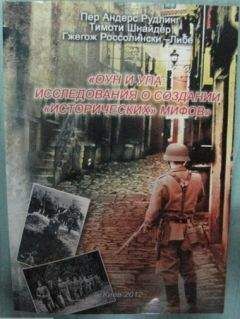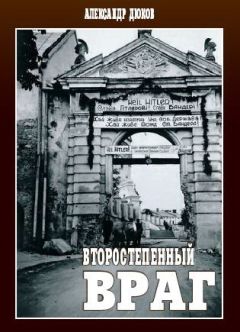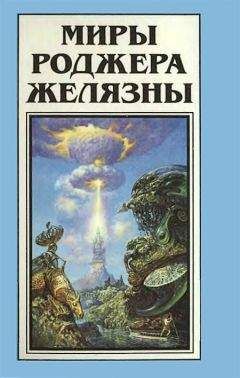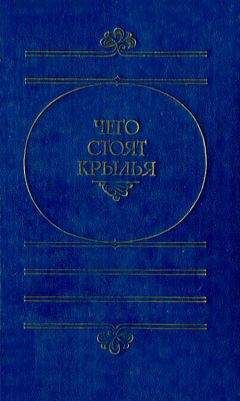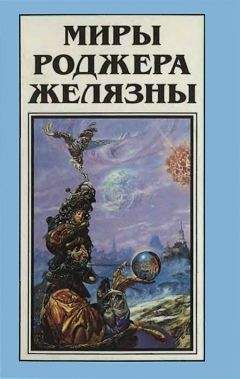265
Tatiana Zhurzhenko, “The Geopolitics of Memory,” Eurozine, May 10, 2007. Available online: http://www.eurozine.com/articles/2007-05-10-zhurzhenko-en.html (accessed November 9, 2010).
Dietsch, Making Sense of Suffering, 223–226.
Andreas Umland and Anton Shekhovtsov, “Pravoradikal’naia partiinaia politika v postsovetskoi Ukraine: zagadka elektoral’noi marginal’nosti ukrainskikh ul’tranatsionalistov v 1994–2009 gg.,” Ab Imperio, no. 2 (2010): 219–247.
Johan Dietsch, “Imagining the Missing Neighbor: Jews and the Holocaust in Ukrainian History Textbooks,” in Heorhii Kas’ianov, Obraz inshoho v susidnikh istoriakh: mifi, stereotypy, naukovi interpretatsii: Materialy mizhnarodnoi naukovi konferentsii, Kyiv, 15–16 hrudnia 2005 roku (Kyiv: NAN Ukrainy, Instytut istorii Ukrainy, 2008), 202, citing David Levy and Nathan Sznaider, “Memory Unbound: The Holocaust and the Formation of Cosmopolitan Memory,” European Journal of Social Theory, Vol. 5, No. 1 (2002): 100.
Wilfried Jilge, “Zmanannia zhertv,” Krytyka, vol. 10, no. 5 (May, 2006): 14–17. 270. Ihor Yukhnovs’kyi (b. 1925) is a physicist, not a trained historian. An enthusiastic admirer of Bandera and Shukhevych, the OUN and UPA, Yukhnovs’kyi has occasionally voiced anti- Semitic views. Aleksandr Burakovs’kyi, “Key Characteristics and Transformation of Jewish-Ukrainian Relations during the Period of Ukraine’s Independence, 1991–2008,” Nationalism and Ethnic Politics, 15, no. 1 (2009): 121; Zenon Zawada, “Kyiv conference focuses on World War II and hisotrical memory,” Ukrainian Weekly, no. 44, November 1, 2009, 18. On Yukhnovs’kyi’s sympathies for the “Social Nationalists,” see Lilia Kuzik, “Ihor Iokhnovs’kyi: Ta derzhava zh mala utvorytysia. I ia robiv, shchob vona utvorylas’,” Zaxid.net, August 11, 2011. http://zaxid.net/home/showSingleNews.do?igor_yuhnovskiyta_derzhava_zh_mala_utvoritisya_i_ya_vse_robiv_shhob_vona_utvorilas&objectId=1233429 (accessed October 2, 2011) The Social-Nationalist Party of Ukraine (SNPU) mobilized the neo-fascist right and used an SS symbol as party emblem. In 2004 it was renamed the All-Ukrainian accociation Svoboda. Anton Shekhovtsov, “The Creeping Resurgence of the Ukrainian Radical Right? The Case of the Freedom Party,” Europe-Asia Studies, Vol. 63, No. 2, (March 2011): 213.
OUN(b) veteran Volodymyr Kosyk serves as its honorary director, and Petro Sodol (b. 1935), aformer president of the OUN(z)-affiliated publishing house Prolog in New York and a senior member of the Ukrainian nationalist youth organization Plast. http://upa.in.ua/book/?page_id=5#zabilyj (accessed December 15, 2010). On Plast and SUM in the diaspora, see Per A. Rudling, “Multiculturalism, Memory, and Ritualization: Ukrainian Nationalist Monuments in Edmonton, Alberta,” Nationalities Papers, Vol. 39, no. 5 (September, 2011): 738–739.
For a list of the TsDVR’s intellectual collaborators and partners, see http://cdvr.org.ua/content/партнери (accessed October 1, 2011)
News release of the Center for the Research of the Liberation Movement, TsDVR, Informatsiina dovidka; http://upa.in.ua/book/?page_id=7 (accessed December 15, 2010).
Sofi a Hrachova, “Unknown Victims: Ethnic-Based Violence of the World War II Era in Ukrainian Politics of History after 2004,” paper presented at the Fourth Annual Danyliw Research Seminar in Contemporary Ukrainian Studies, Chair of Ukrainian Studies, University of Ottawa, October 23–25, 2008, 9.
Endorsement by “Ihor Yukhnovs’kyi, Academician, head of the Ukrainian Institute of National Memory,” in Volodymyr V’’iatrovych, ed., Ukrains’ka Povstans’ka Armiia: Istoriia neskorenykh (Kyiv: Tsentr doslidzhen’ vyzvol’noho rukhu, 2007), back cover.
“Instytut natsional’noi pam’’iati zvernuvsia do Iushchenka, aby vin prysvoiv Romanu Shukhevychu zvannia Heroia Ukrainy,” Zik: syla informatsii, July 2, 2007: http://zik.com.ua/ua/ news/2007/07/02/80305 (accessed October 15, 2010).
On the state honoring of Stets’ko, see Viktor Yushchenko, “Ukaz prezydenta Ukrainy No. 416/2007 Pro vshanuvannia pam’iati Iaroslava Stets’ka i Iaroslavy Stets’ko”: http://www.president.gov.ua/documents/6145.html (accessed April 10, 2008). On the cult of Shukhevych, see Per A. Rudling, “The Shukhevych Cult in Ukraine: Myth Making with Complications,” World War II and the (Re)Creation of Historical Memory in Contemporary Ukraine, Kyiv, September 25, 2009. Available online http://ww2-histroricalmemory.org.ua/abstract_e.html (accessed October 11, 2009). On Bandera, see Amar, Balyns’kyi, and Hrytsak, Strasti za Banderoiu. In December 2010, the Kyiv city council declared that they will rename city streets after Shukhevych, Stest’ko, and Mel’nyk. “Na Oboloni z’’iavyt’sia vulitsia Romana Shukhevycha,” Ukrains’ka pravda: Istorychna pravda, December 16, 2010: http://www.istpravda.com.ua/short/2010/12/16/9227/ (accessed December 17, 2010).
Swedish historian Göran B. Nilsson describes the Soviet practice of writing history from the perspective of a constantly changing present as “chronological imperialism.” Göran B. Nilsson, “Historia som humaniora,” Historisk Tidsskrift no. 1 (1989): 1, 4.
To commemorate the centennial of the birth of the OUN poet Olena Teliha, President Yushchenko in 2006 issued a presidential decree to erect a memorial “to her and her associates” in Babin Yar, where her body had been buried in 1942. Aleksandr Burakovs’kyi, “Istoriia memoralizatsii evreiskoi tragedii v Bab’em Iaru za god ee 70-letiia: pozor Ukrainy,” My Zdes’, no. 278: http://www.newswe.com/index.php?go=Pages&in=view&id=2725 (accessed October 3, 2010), citing Yushchenko decree No. 416/2006. In Drohobych, a monument to Bandera has been erected at the site of the former ghetto. Omer Bartov, Erased: Vanishing Traces of Jewish Galicia in Present-Day Ukraine (Princeton, Conn.:Princeton University Press, 2007), 52–53.
Jilge, “Zmanannia zhertv,” 14.
V’’iatrovych, Stavlennia OUN do ievreiv.
There is no shortage of such memoirs. See for example Shimon Redlich, Together and Apart in Brzezany: Poles, Jews and Ukrainians, 1919–1945 (Bloomington: Indiana University Press, 2002), 103–104; Reuben Ainsztein, Jewish Resistance in Nazi-Occupied Eastern Europe: With a Historical Survey of the Jew as Fighter and Soldier in the Diaspora (London: Paul Elek, 1974), 252–256. On the OUN’s and the UPA’s attitude to Jews during the war, see Weiner, Making Sense of War, 239–297.
A Wehrmacht intelligence report from April 1944 reports that “the UPA has successfully taken up pursuit of the Jewish gangsters and up to now shot almost 100.” Staatsanwaltschaft Dortmund 45 Js 24/62, Bd “Reste von Gutachten und Dokumenten aus dem Bestand des Pz. AOK 4,” BA-MA, RH-21, Pz. AOK 4, Abt. Ic/AO, Tätigkeitsbericht, April 1944, as cited in Golczewski, “Shades of Grey,” 143. On this topic, see Weiner, Making Sense of War, 263–264.
Pres-tsentr Sluzhba bezpeki Ukrainy, “U Sluzhby bezpeky Ukrainy vidbulys’ Hromads’ki istorychni slukhannia “Evrei v Ukrains’komu Vyzvol’nomu ruzi,” April14,2008,http://www.sbu.gov.ua/sbu/control/uk/publish/article?art_id=77689&cat_id=39574 (accessed April 14, 2008).
Iryna Ehorova, “Volodymy V’’iatrovych: Holovnym sub’ektom istorychnoho protsesu v Ukra)ni XX stolittia bula ne URSR, a ukra)ns’kyi vyzvol’nyi rukh,” Den’, February 18, 2008: http://www.ukrnationalism.org.ua/interview/?n=69 (accessed March 16, 2008).
John-Paul Himka, “True and False Lessons from the Nachtigall Episode,” Brama, March 19,2008: http://brama.com/news/press/2008/03/080319himka_nachtigall.html (accessed March 19, 2008). See also Kurylo and Himka [Khymka], “Iak OUN stavylasia do ievreiv?” 252–265.
V’’iatrovych, Stavlennia OUN, 78–81. At the April 2008 conference at the SBU, V’’iatrovych repeated his argument on the SBU website, adding an additional example of a Jew in the UPA, Leiba-Itsko Dobravs’kyi. “U Sluzhby bezpeki Ukrainy.”
V’’iatrovych, Stavlennia OUN, 74, citing R. Petrenko, “Za Ukrainu, za ii voliu. Spohady,” Litopys Ukrains’koi Povstans’koi Armii, 27 (Toronto and Lviv: Litopys UPA, 1997), 173.
Himka, Ukrainians, Jews, and the Holocaust, 47.
As of January 2011, the documents were still available on the website of the Ukrainian Embassy in Canada, “Novini,” Posol’stvo Ukrainy v Kanadi, February 6, 2008: http://www.ukremb.ca/canada/ua/news/detail/11684.htm (accessed January 18, 2011).
Iaryna Iasynevych, “V’’iatrovych: ‘Kampania proty Shukhevycha ne maie istorychnoi osnovy,’”Narodna Pravda, March 4, 2008: http://narodna.pravda.com.ua/history/47cd371e88b05/ (accessed March 16, 2008).
Volodymyr V’’iatrovych, “Iak tvorylasia lehenda pro Nakhtihal’,” Dzerkalo Tyzhnia, no. 6 (685) 16–22 February 2008: http://www.dt.ua/3000/3150/62036/ (accessed March 16, 2008)
Mishchenko, “Pratsivnyk SBU.”
SBU, “U Sluzhbi bezpeky Ukrainy vidbulys’ Hromads’ki istorychni slukhannia ‘Evrei v Ukrains’komu vyzvol’nomu rusi,’ April 14, 2008: http://www.sbu.gov.ua/sbu/control/uk/publish/article?art_id=77689&cat_id=39574 (accessed April 14, 2008).
Wilfried Jilge, “Nationalukrainischer Befreiungskampf: Die Umwertung des Zweiten Weltkrieges in der Ukraine,” Osteuropa 58, (2008): 179.
SBU, “U Sluzhbi bepeki Ukrany vidkrylas’ fotovystavka “Ukrains’ka Povstans’ka Armiia. Istoria neskorennykh,” May 27, 2008: http://www.sbu.gov.ua/sbu/control/uk/publish/article?art_id=78839&cat_id=78711 (accessed August 21, 2008).
V’’iatrovych, Stavlennia OUN, 96, citing HDA SBU, f. 13, spr. 376, tom 65, ark. 283–295; SBU, “Evrei v Ukrains’komu vyzvol’nomu rusi.”
SBU, “Sluzhba bezpeki Ukrainy vidkryvae dlia shyrokoho zahalu arkhivni materially shchodo osib, prychetnykh do orhanizatsii ta zdiisnennia politiki Holodomoru-Henotsydurepresii” http://www.sbu.gov.ua/sbu/control/uk/publish/article?art_id=80420&cat_id=395 (accessed August 7, 2008).
SBU, “U Sluzhbi bezpeki Ukrainy vidkrylas’ fotovystavka ’Ukrains’ka Povstans’ka Armiia.’” Iurii Shukhevych (b. 1933) is the son of UPA commander Roman Shukhevych and leader of the far-right UNA-UNSO, the Ukrainian sister party of the German neo-Nazi NPD. It is openly antidemocratic — in the 1990s its propaganda posters carried the slogan “Vote for us and you will never have to vote again.” Along with Levko Luk’’ianenko (b. 1928), Shukhevych was one of the more prominent nationalist dissidents and a cause celebre for the émigré OUN. Following independence, Luk’’ianenko became Ukraine’s leading anti-Semite. Yushchenko designated both Iuryi Shukhevych and Luk’’ianenko Heroes of Ukraine. Per A. Rudling, ”Anti-Semitism and the Extreme Right in Contemporary Ukraine,” in Andrea Mammone, Emmanuel Godin, and Brian Jenkins, eds., Mapping the Extreme Right in Contemporary Europe: From Local to Transnational (forthcoming); John-Paul Himka, “The Importance of the Situational Element in East Central European Fascism,” East Central Europe 37 (2010): 357.
“Fishbein: ne dopustit’ Ukrainu v NATO — spetsoperatsiia Kremlia,” DELFI, July 12, 2009: http://www.delfi.ua/news/daily/foreign/fishbejn-ne-dopustit-ukrainu-v-nato-specoperaciyakremlya.d?id=467241 (accessed September 7, 2009); Svitlana Makovyts’ka, “Maestro bozhystoi movy: Ukrains’kyi poet Moisei Fishbein — pro politychnyi dal’tonizm, heniiv slova i heroiv Ukrainy,” Ukraina moloda, November 28, 2007: http://www.umoloda.kiev.ua/number/1051/171/37785/(accessed December 5, 2007). Fishbein repeats, almost verbatim, the same statements in subsequent interviews. Ol’ha Betko, “Poet M. Fishbein: dlia mene UPA — tse sviate,” BBC Ukrainian Service, October 14, 2008.
For Fishbein’s complete speech, see Moses Fishbein, “The Jewish Card in Russian Special Operations Against Ukraine: Paper delivered at the 26th Conference on Ukrainian Subjects at the University of Illinois at Urbana-Champaign, 24–27, June 2009: http://www.vaadua.org/VaadENG/News%20eng-2009/fishbeyn2.htm (accessed November 8, 2009).
Fishbein, “The Jewish Card”; “Russia uses ‘Jewish card’ to destabilize Ukraine, Fishbein says,” Ukrainian News, 25 June — July 8, 2009, 6; and Marko Levytsky, “UPA detractors fan the fl ames of ethnic discord,” Ukrainian News, February 18–March 3, 2010, 6.
Moses Fishbein, “The Jewish ard in Russian Operations against Ukraine,” Kyiv Post, June 30, 2009: http://www.kyivpost.com/opinion/44324 (accessed September 7, 2009).
Paul Goble, “Window on Eurasia: Moscow Special Services Again Play the ‘Jewish Card’ against Ukraine, Kyiv writer Says,” Window on Eurasia, July 9, 2009: http://windowoneurasia.blogspot.com/2009/07/window-on-moscow-special.html (accessed September 5, 2009). Goble presents himself as “a longtime specialist on ethnic and religious questions in Eurasia,” and worked, among other things, for the U.S. State Department, the CIA, and RFE/RL until 2004, when he made a career as vice dean and director of research at several universities in the former Soviet Union.
